By Sr. Maryanne Terrenal RGS
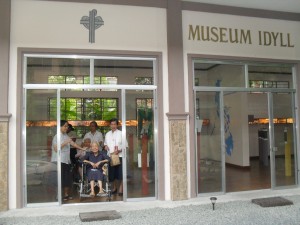
Photo: The Museum Idyll
Yesterday, March 19, 2012, Heart of Mary Villa Community, newly moved to the compound from their flood-harrassed place in Malabon, invited the sisters in Maria Droste Infirmary to be their special guests at their annual celebration of the feast of St. Joseph. They were shown the video of the history of HMV, many of whom had served there in their youth.
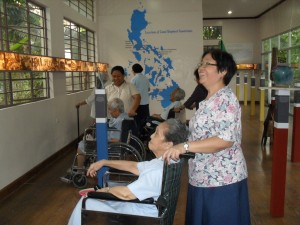
Today, March 20, the Provincialate Community invited them to tour the Centennial Museum Idyll, a garden museum conceptualized by our St. Bridget College alumna, Marian Pastor Roces in collaboration with the Heritage Committee of the 2012 Centennial. After watching some videos to introduce the vision and mission of this Museum Idyll, the Sisters most of whom were in wheelchairs, were led to the museum compound itself. The entrance is a garden representing the forest that the Irish Sisters in 1912 were greeted with when they landed in Batangas City. At the middle of the front yard is a big half-submerged globe, lighted and with a fountain, on which is mapped the whole world, marking specially the countries where the RGS are in the various continents. There is also a small forest, with plants directly imported from Angers, to represent the Motherhouse.
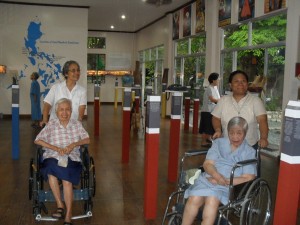
Area Two contains the plinths showing the first communities built in the Philippines. Areas Three and Four are crowded with plinths representing the houses built in the next decades. Each plinth has a symbolic item that represents the city or country section where the convent is, or had been. For example, on the Isabela plinth is a bunch of corn, the main product of that province. On the Welcome House stand is an old telephone, the first instrument the Sisters used for guidance and counselling. South Korea, which was founded by American Sisters missioned in the Philippines when they received their obedience, is represented by a tree covered with snow. The first Filipino Sisters assigned there were sent back to the Philippines, because they were told by the Korean doctors that one more winter in Ocpong where the snow stayed for weeks reached up to their waist, would dry up their Filipino blood (Korea at that time was poorer than the Philippines.)

Photo: Sr. Maryanne Terrenal of SBS-Buhi points to her photo in the museum.
On the EXIT side of the building are ten bright posters drawn by young artists after attending an orientation session on the history of the Good Shepherd Sisters in the Philippines. The ten posters show the ten decades of our history, from the first girl-students in St. Bridget’s Academy, Batangas, to the WJPIC thrust of the Sisters alongside the lay people, shouting NO to Martial Law, and to the crying youth who are victims of trafficking and the modern social problems.
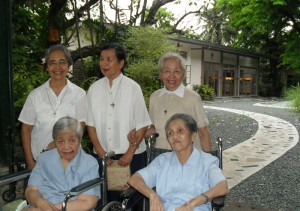 Interesting to note was that among the Infirmary Sisters were five foundresses of the different convents. Of course they also had their special pictures taken (by Sr. Gina, perennial camera-lady of the Province); in front of the houses they had helped to found – Maryridge, Welcome House, Buhi, Guam, and Isabela.
Interesting to note was that among the Infirmary Sisters were five foundresses of the different convents. Of course they also had their special pictures taken (by Sr. Gina, perennial camera-lady of the Province); in front of the houses they had helped to found – Maryridge, Welcome House, Buhi, Guam, and Isabela.
Photo: Five foundresses: standing, from left Srs. Patricia Perez (Guam), Maryanne Terrenal (Buhi) , Mary James Wilson (Welcome House; seated, Srs. Julia Gonzales (Isabela), and Mary Ann Fiel (Maryridge).
And after the tour, the inevitable snacks were brought out by Province leader, Sr. Cecile. She said it was a gift from a Filipino Sister missioned in the USA. Thanks for an educational, memory-evoking, exciting experience, dear Sr. Cecile and company!
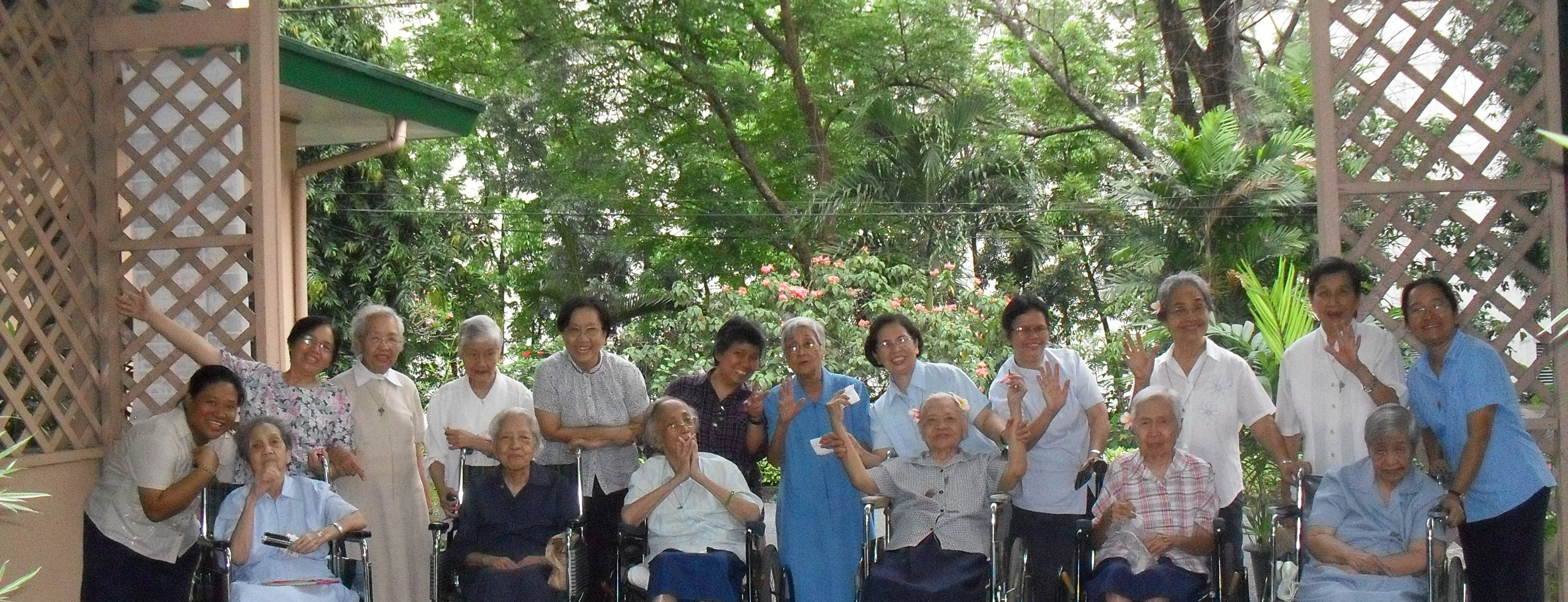 |
| Good Shepherd Sisters from the Maria Droste Infirmary with the Provincialate, SBS-Buhi and Euphrasian communities. |
Read Related story: Blessing of Museum Idyll
